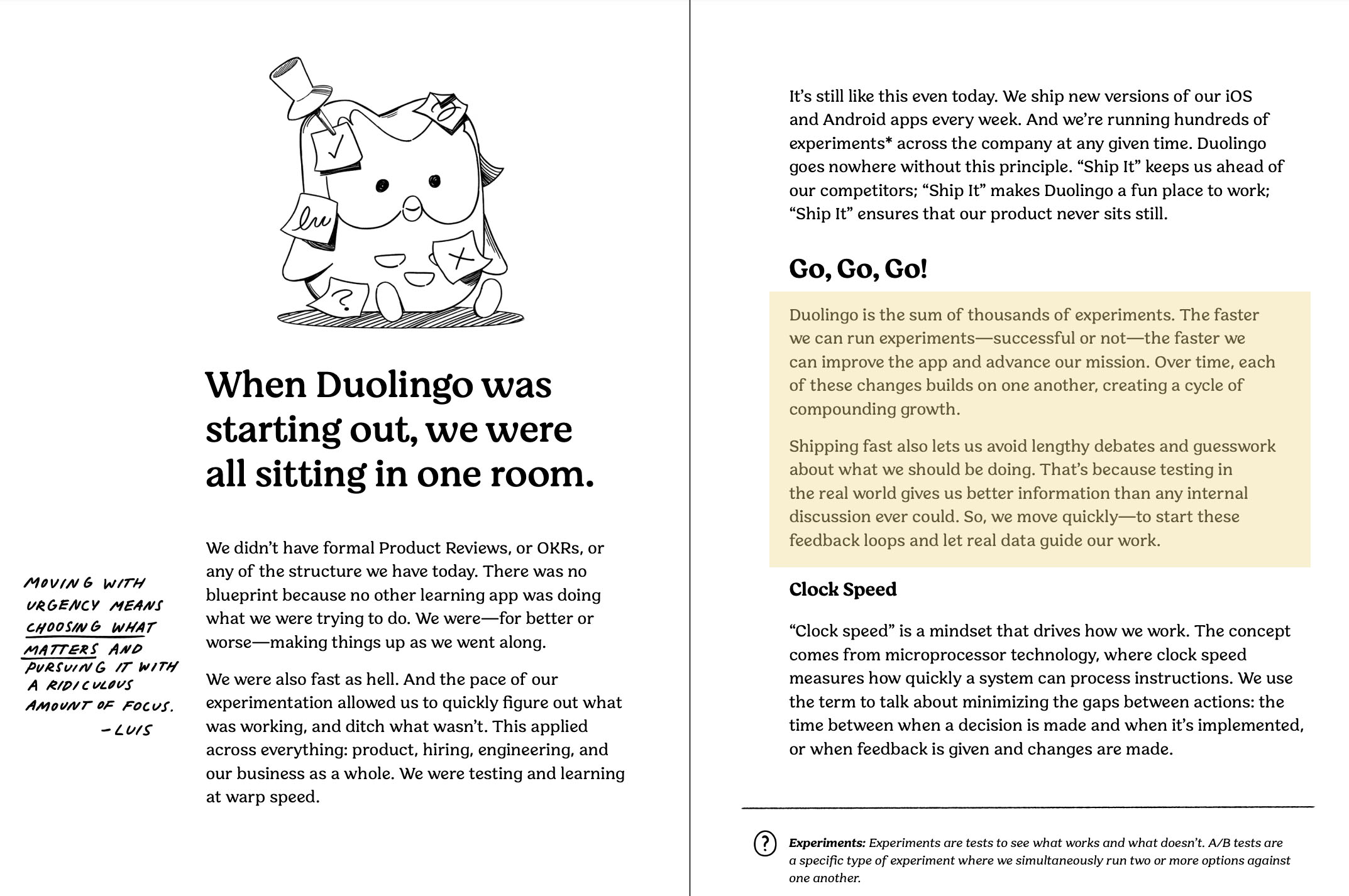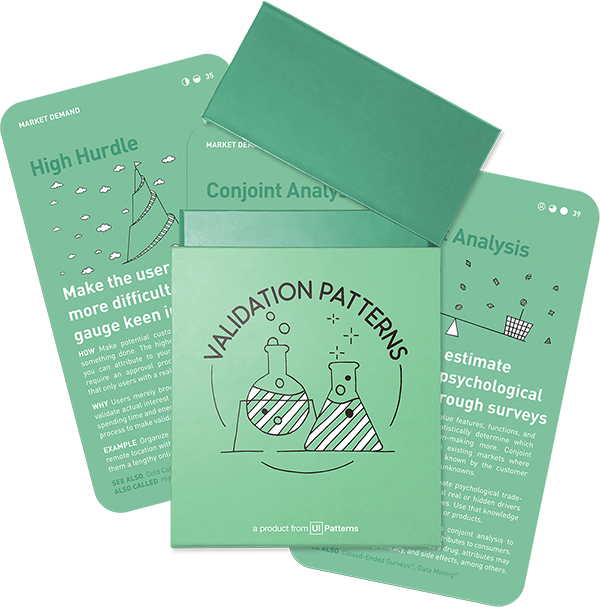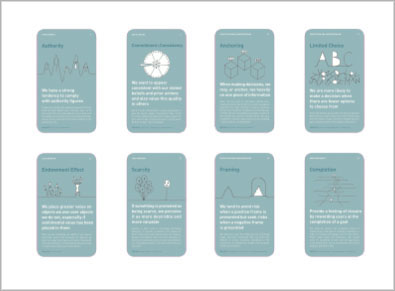The Duolingo Way: Experimentation at the speed of learning?
How relentless experimentation fuels rapid learning and innovation – and what your product team can learn from their playbook.
Test ideas fast with the Validation Patterns printed card deck
60 proven product experiments to validate your ideas in days, not months. Used by product teams at Google, Facebook, and Amazon.
Get your deck!Most companies love to talk about being “data-driven.” They say they run experiments, analyze results, and make decisions based on what they learn. But when you peek under the hood, their process is slow. Decisions drag. Meetings pile up. And by the time they act, the opportunity has already changed.
Duolingo gets it.
They understand what many companies miss: the speed of experimentation dictates the speed of impact. The faster you run experiments, the faster you learn. The faster you learn, the faster you improve. That’s not just a nice-to-have; it’s a competitive advantage.

Their newly public company handbook is a manifesto of how to build and grow by testing relentlessly. It’s filled with golden nuggets.
“Shipping fast lets us avoid lengthy debates and guesswork.”
The real value of experimentation isn’t just in running tests, it’s in what happens after.
The greatest bottleneck of experimentation: decision-making and execution
Most teams focus on running A/B tests. They set up experiments, track metrics, and wait for results. But that’s only half the equation. The real bottleneck is decision-making and execution. How quickly can you take what you’ve learned and act on it?
This is where companies get stuck. They gather data, but then everything slows down. Meetings are scheduled to discuss findings. Analysts write reports. Leadership wants a review. And suddenly, weeks have passed before any real decision is made.
Duolingo sidesteps this completely. Their approach ensures that the time between test completion and action is minimized. They don’t just run experiments fast; they ship fast.
That’s the difference between being “data-driven” in theory and in practice.
Small improvements, executed consistently, compound into massive advantages over time. Duolingo applies this same principle to product development. Every experiment is an opportunity to learn, and the more experiments they run, the more insights they gain. This constant iteration creates a flywheel effect where each cycle builds on the last, accelerating growth at a pace that competitors struggle to match.
Too many companies waste time debating ideas internally when they could just test them in the real world. That’s why their handbook emphasizes speed. They know that insights gained from real users are infinitely more valuable than endless internal discussions. The result? Their product evolves faster than competitors who are still stuck in meetings.
Pre-deciding on outcomes
One of the smartest things Duolingo does is pre-registering decisions.
Instead of waiting for results and then debating what to do next, they decide in advance. If an experiment wins, they already know the next step. If it loses, they already have a fallback plan. This eliminates bottlenecks and ensures that insights lead to action immediately.
When systems are designed to minimize hesitation, execution becomes automatic. Duolingo removes friction between insight and action, making their iteration cycles dramatically shorter.
Duolingo removes friction between insight and action
Most product teams think the problem is not running enough experiments. But the real issue is the lag between insight and action. Running an experiment doesn’t mean much if you take weeks to implement the results.
Duolingo is aiming to uphold a culture and ways of working where experimentation isn’t just an activity, but a habit. They’ve tried to structure their processes in a way that removes friction between idea, test, decision, and implementation.
That is what separates fast-moving teams from those stuck in analysis paralysis.
Key Takeaways
Speed isn’t reckless. Speed is learning.
Duolingo’s playbook is simple:
- Test quickly.
- Decide quickly.
- Ship quickly.
If you want to be an experimentation-driven company, then act like one. Don’t treat experimentation as a side project, but make it the core of how you build and grow.
Treat everything like an experiment. If you’re constantly testing and iterating, you’re always improving.
Compounded learning wins.
If you’re interested in learning more about experimentation, the Validation Patterns card deck is a great start. It’s a collection of 60 lean and easy-to-run product experiments that will help you get answers in hours or days, not weeks or months.
- The Duolingo Handbook by The Duolingo team
- The Validation Patterns card deck by Anders Toxboe
- Thomke, S. (2020). Evaluating the impact of rapid experimentation on product growth. Harvard Business Review.
- Luca, M., & Bazerman, M. H. (2020). Compounding growth in digital products: The role of continuous learning. Journal of Digital Innovation, 5(1), 45-67.
- Eisenhardt, K. M. (1989). The speed advantage: How rapid decision making transforms organizations. Academy of Management Review, 14(4), 532-550.

